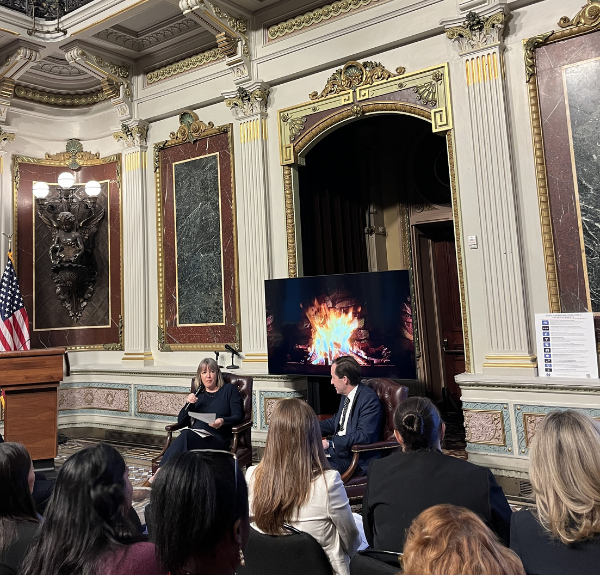Today, the Office of Management and Budget (OMB) released its latest updates to the President’s Management Agenda (PMA). This quarter, the Implementation Leads for Customer Experience (Priority 2) share updates on where we are with this PMA priority.
Every interaction between the Federal Government and the public is an opportunity for us to demonstrate that we can deliver what people need when they need it. That’s why President Biden focused the second Priority of his PMA on revolutionizing the Federal Government’s customer service delivery. Agencies are committed to – and making significant progress towards – rebuilding customer experience in the 21st century. We know that delivering fast, equitable, and efficient services is crucial to rebuilding America’s trust in its government.
Supported by Executive Order 14058, the second priority of the PMA lays out two vehicles through which we are spearheading a revolution in Federal government services: High Impact Service Providers (HISPs) and Life Experience Projects, aligning with Strategy 1 and 2 of Priority 2, respectively. Both have significant progress to report in this quarter’s PMA updates, and I’m excited to delve deeper into that with you now.
First, we’ll start with the High-Impact Service Providers, or HISPs. These are 35 agencies with significant interactions with the American people. Think of the TSA, IRS, and Social Security Administration - each of these agencies has millions of face-to-face interactions with Americans every day, and each one is an opportunity to build trust with the American public. Today’s updates include steps taken by HISPs to strengthen their service delivery, which in turn is work to build trust directly with the American people.
As of today, 26 of 35 HISPs are now publicly reporting data on their interactions with the public to increase accountability. Back in February of 2023, each HISP conducted a CX Capacity Assessment that provided them with an opportunity to self-report their capacity and maturity levels on key components of CX: talent, service management, digital capabilities, and leadership buy-in, among others.
Some HISPs have already made significant progress: Last year, the SSA launched a redesign of SSA.gov, which serves over 180 million visitors per year, to improve customer service and enable people to complete business online. The website, modernized in collaboration with the U.S Digital Service, greets users with a task-focused site, is written in plain language, and has Spanish translations for every page.
Another example is the Department of Health and Human Services (HHS), which used extensive user interviews and prototyping to better understand Medicare customers’ needs to inform improvements to Medicare.gov. Based on customer feedback, the HHS team implemented a comparison of year-over-year coverage, a redesigned Medicare Plan Finder summary, and an in-network pharmacy finder.
To continue building on these successes, the OMB CX team analyzed the Capacity Assessment submissions to prepare for Deep Dive meetings with each HISP in March 2023, where OMB and HISP teams collaborated to build out more than 250 tangible action items. OMB gained valuable insights about the challenges HISPs are facing and the ways in which the OMB CX team can best support their continued progress.
This highlights one of the most critical aspects of the PMA – cross-agency partnership. As Implementation Leads, we see how OMB’s CX teams are collaborating with teams from other agencies. For example, GSA hosts several cross-agency communities of practice (including one for CX) to enable learning and sharing of best practices across the federal government.
Another area where the PMA enables cross-agency and cross-silo cooperation are the Life Experience Projects. Last year, OMB selected five common life experiences in which Americans interact with the Federal Government: approaching retirement, recovering from a natural disaster, transitioning from the military to civilian life, having a child and early childhood, and facing an unexpected financial shock. From hundreds of interviews with real Americans, we developed eleven human-centered design projects to fix common pain points, aiming to comprehensively redesign the way the Federal Government delivers services from a human-centered perspective.
In today’s updates, we share milestones for two new Life Experience projects announced last quarter, and provide further updates on the nine original projects announced earlier this year. One project with significant updates is the “Prototyping integrated transition planning support for Service members” project, under the “Navigating Transition to Civilian Life” life experience. In this project, the Department of Veterans Affairs (VA) is building prototypes and minimum viable products for a single piece of shared software for former service members to help them access their earned benefits, replacing a confusing and burdensome network of sometimes-overlapping services.
In another example, one project that is part of the “having a child and early childhood” life experience pilots text message notifications with families and involves the General Services Administration working closely with the Department of Health and Human Services, the Department of Agriculture, the Social Security Administration, the Department of the Treasury, and the Department of Housing and Urban Development.
By breaking down silos and encouraging cross-agency cooperation, the PMA is enabling revolutionary improvements in the way we deliver our services to the American people. Check out more on Performance.gov to view all updates published today, not just in the CX priority. From what we’ve seen, the future of delivering a great customer experience looks bright – and there’s more to come.
More PMA Updates
In addition to the Customer Service priority updates shared above, we also posted updates for all three priority areas of the PMA. In Priority One, Strengthening and Empowering the Federal Workforce, OPM recently announced new proposed regulations for the Pathways Programs, designed to bring in students and early career applicants. These regulations will facilitate a better application experience, improve developmental opportunities for Pathways Program participants, and streamline agencies’ ability to hire participants in the programs. In the third Priority, Managing the Business of Government, teams working in the Federal Financial Assistance space are coordinating to launch a Council on Federal Financial Assistance (COFFA). Additionally, OPM released a competency model for the grants management workforce.
For a comprehensive overview of all PMA updates, visit the PMA page, and the strategy pages for each priority:
- Priority 1 - Workforce:
- Strategy 1 - attracting and hiring the most qualified employees
- Strategy 2 - making every Federal job a good job
- Strategy 3 - building a roadmap to the future of the Federal workforce
- Strategy 4 - building the support system required to sustain the Federal Government as a model employer
- Priority 2 - CX:
- Strategy 1 - improving delivery at High Impact Service Providers
- Strategy 2 - building government service delivery for key life experiences
- Strategy 3 - developing Federal shared products, services, and standards for CX
- Priority 3 - Business of Government:
- Strategy 1 - fostering lasting improvements in the Federal acquisition system
- Strategy 2 - building capacity in federal financial management
Stay Informed
To discuss the latest PMA updates, on October 3 OMB Associate Director for Performance and Personnel Management Loren DeJonge Schulman will be hosting a virtual CX Day Discussion with General Services Administrator and Priority 2 Lead Robin Carnahan. RSVP today for what is sure to be an insightful discussion.
Follow along with Performance.gov on LinkedIn and Twitter as we highlight different agencies and their goals. We will continue to update Performance.gov quarterly with progress on agency and PMA priorities and strategies.
Subscribe to our newsletter to receive updates in your inbox.




